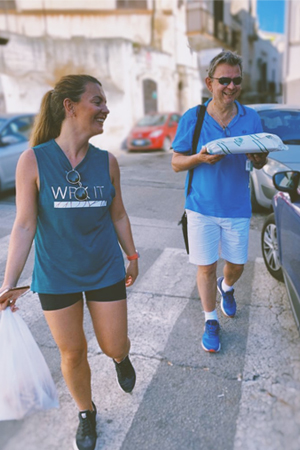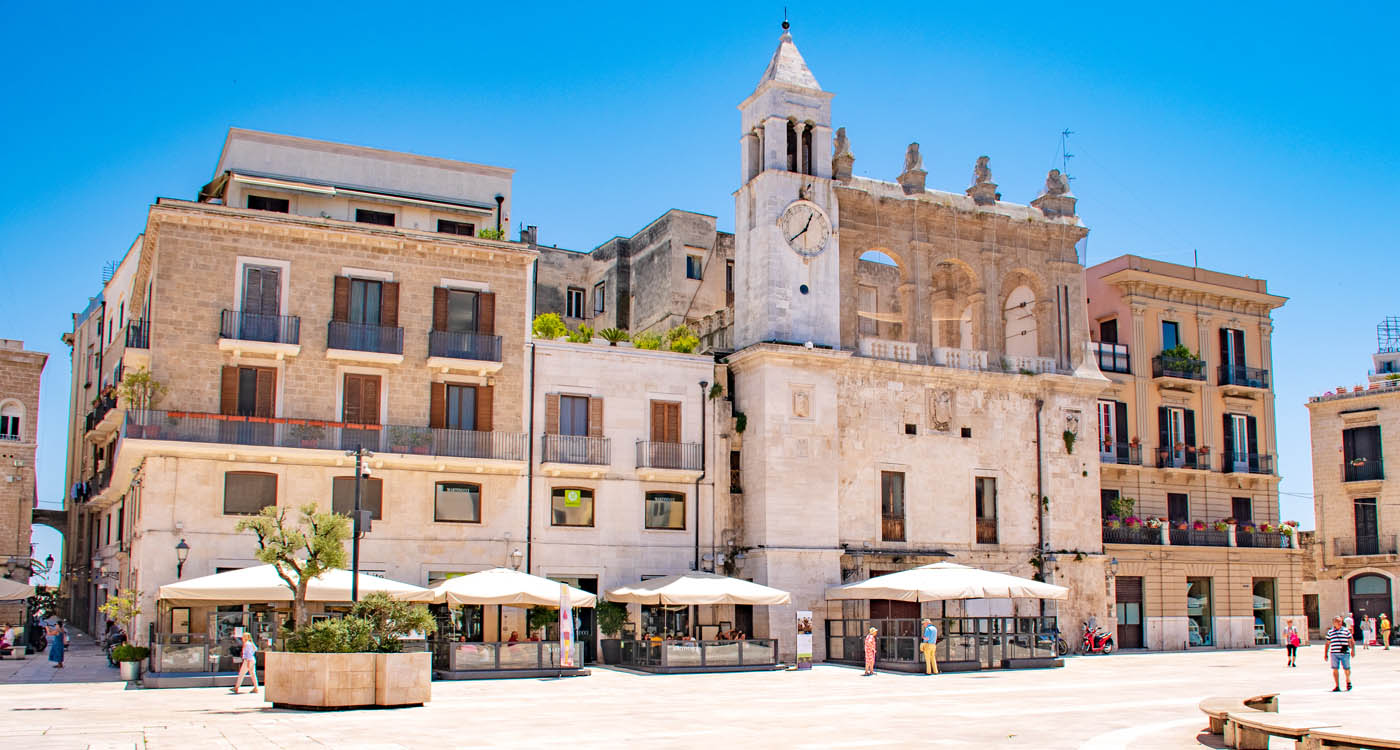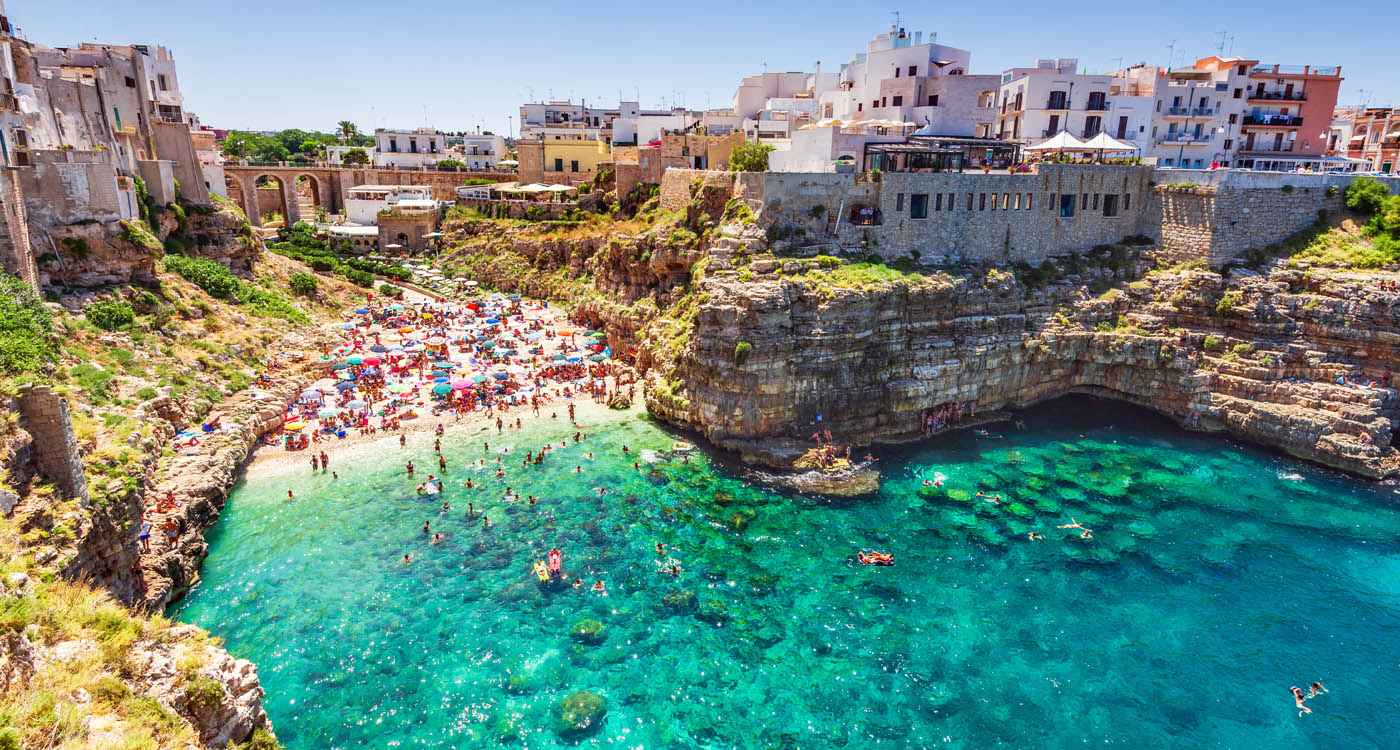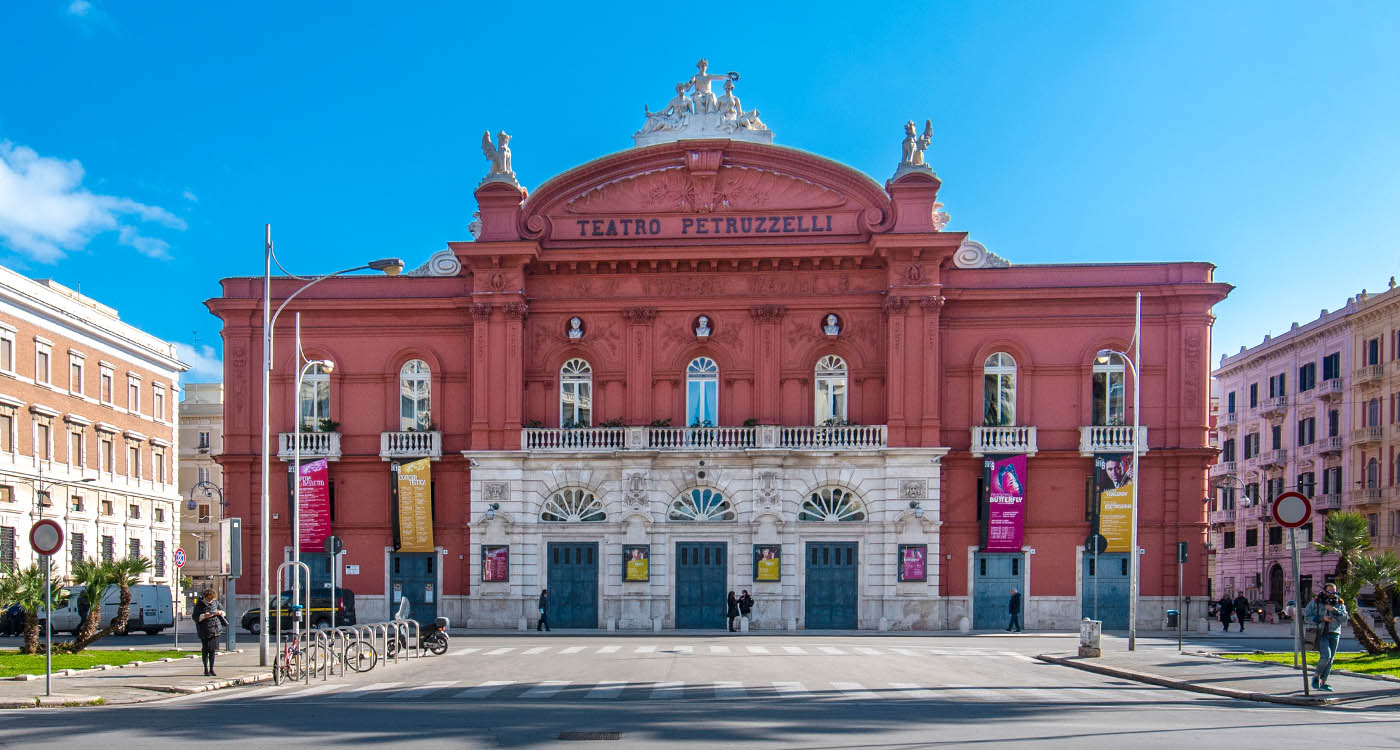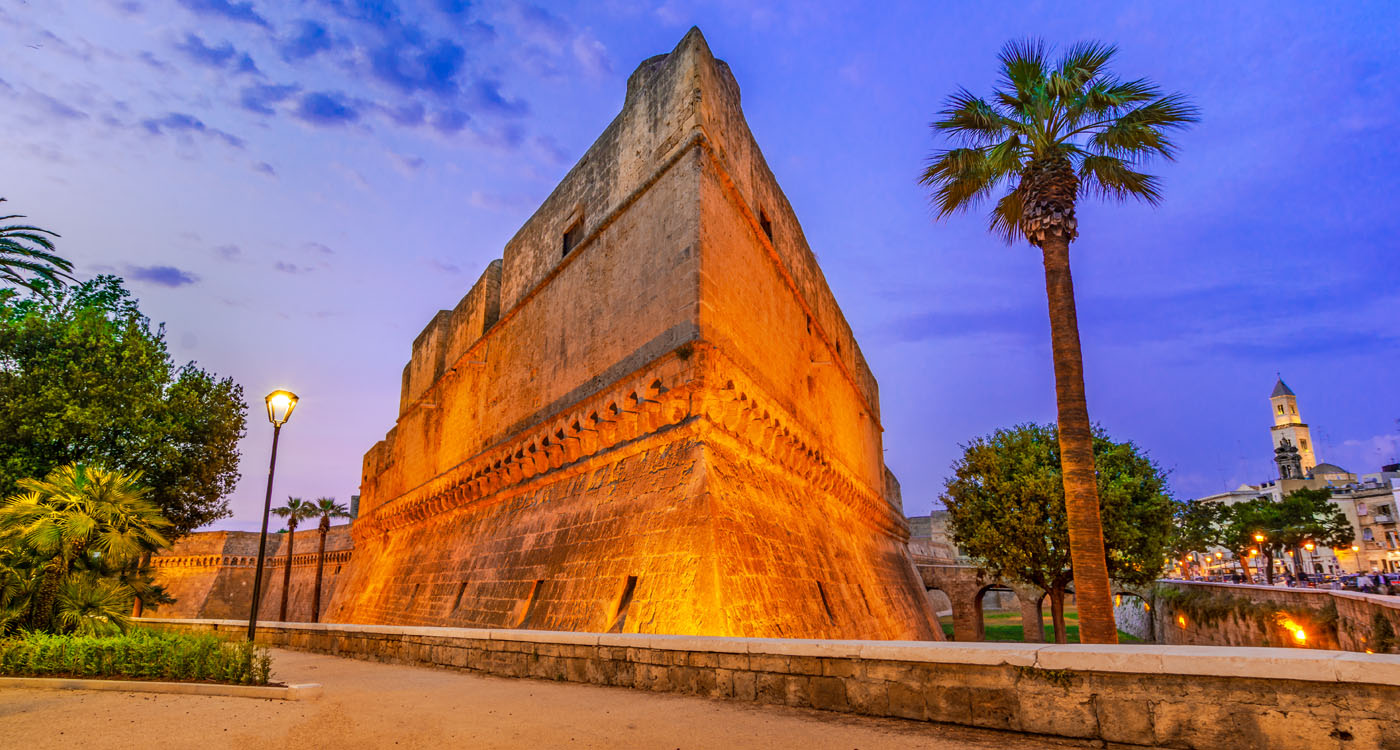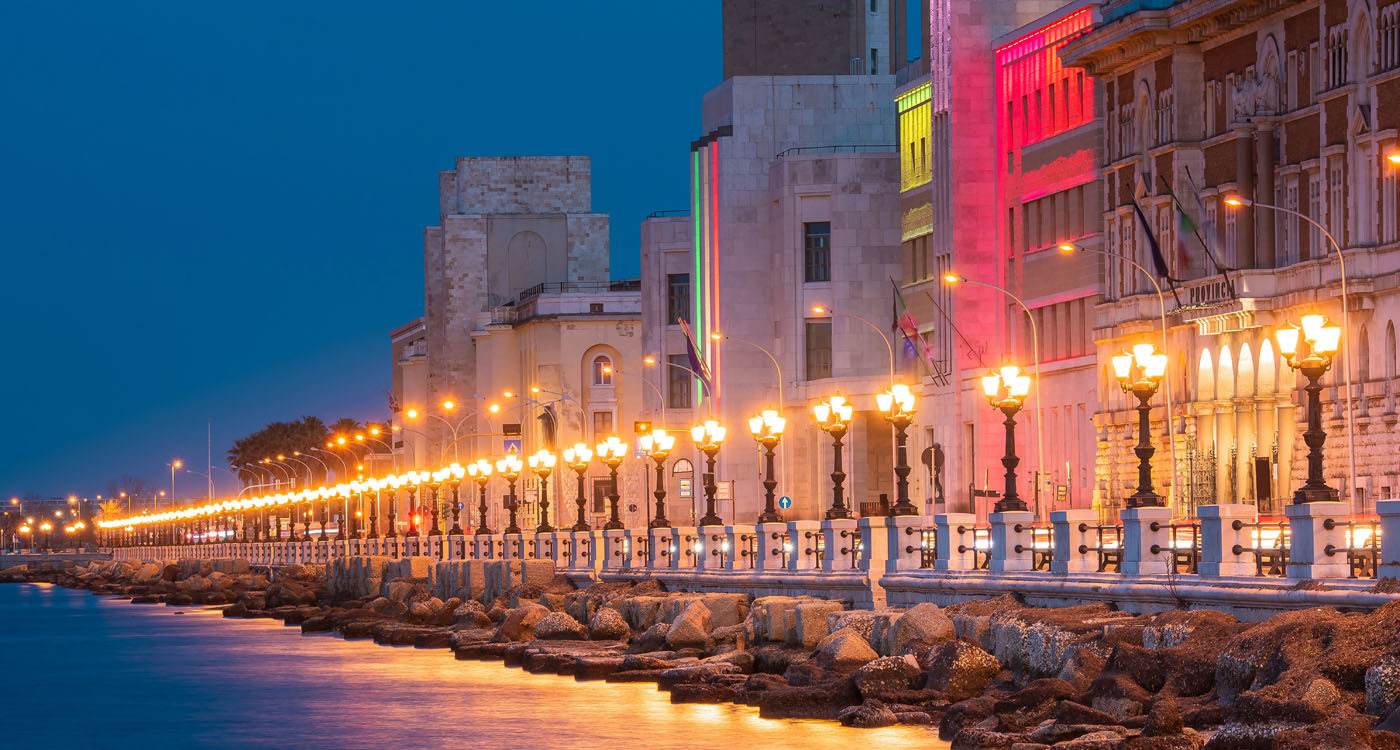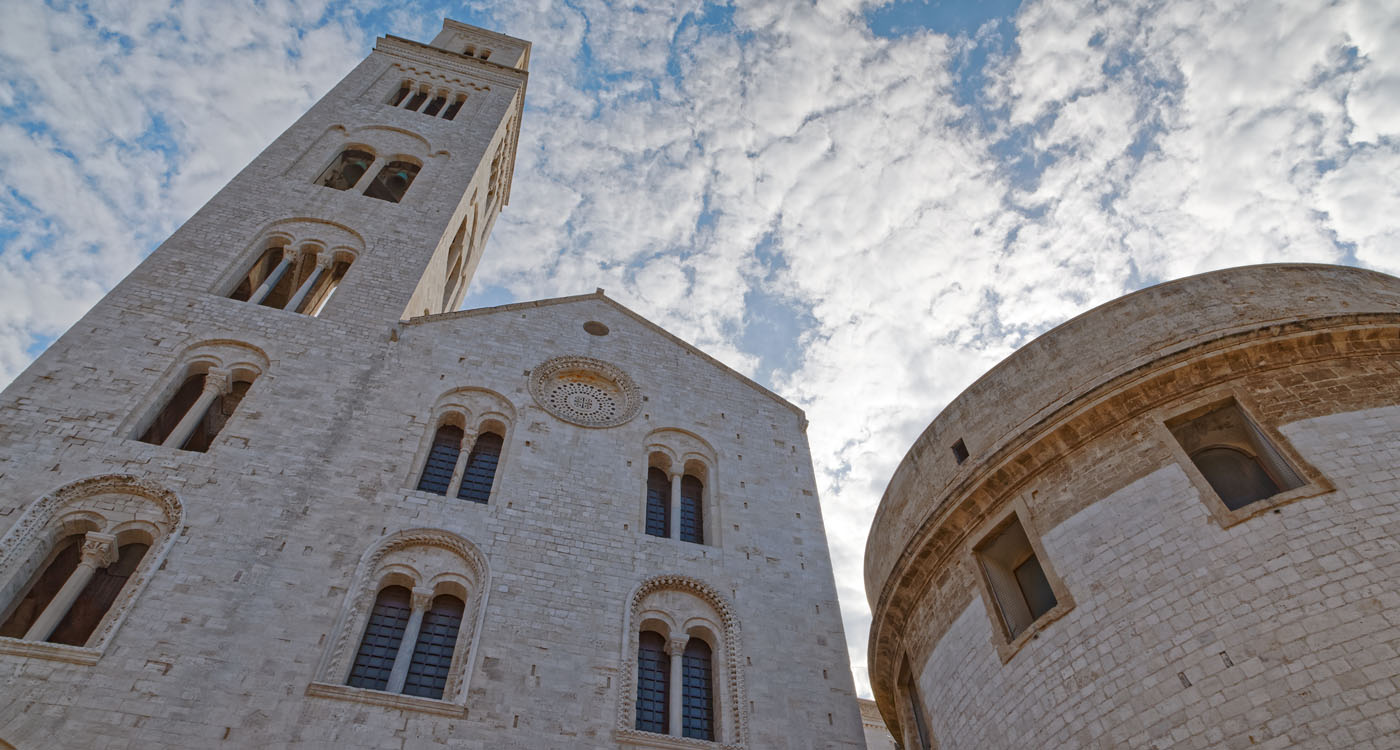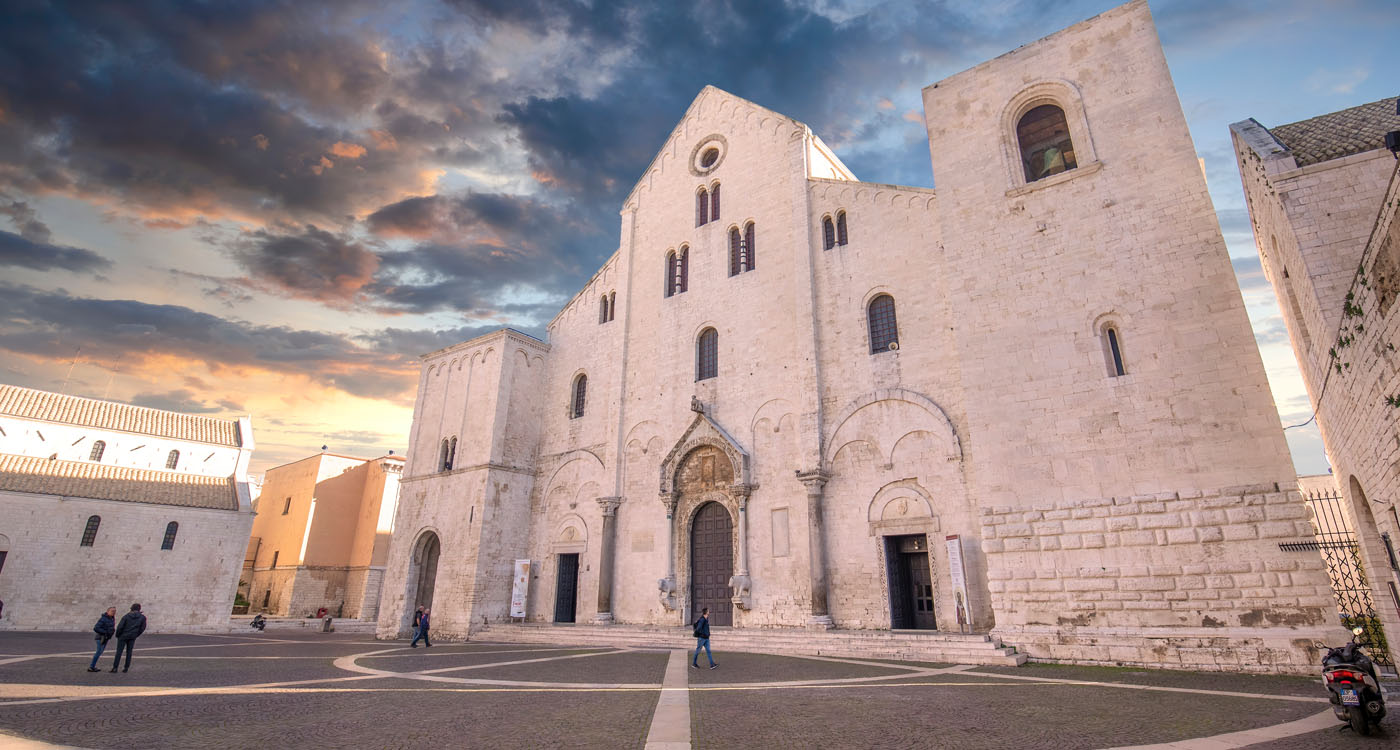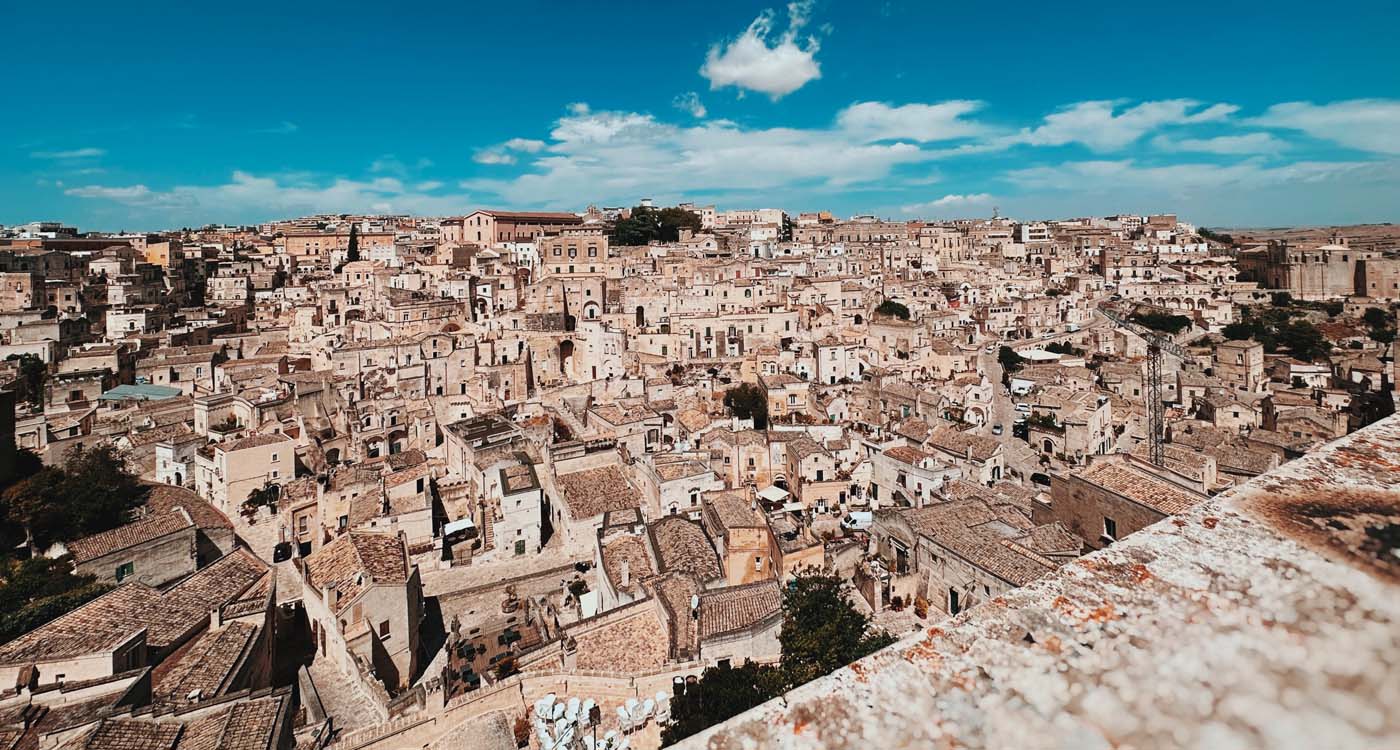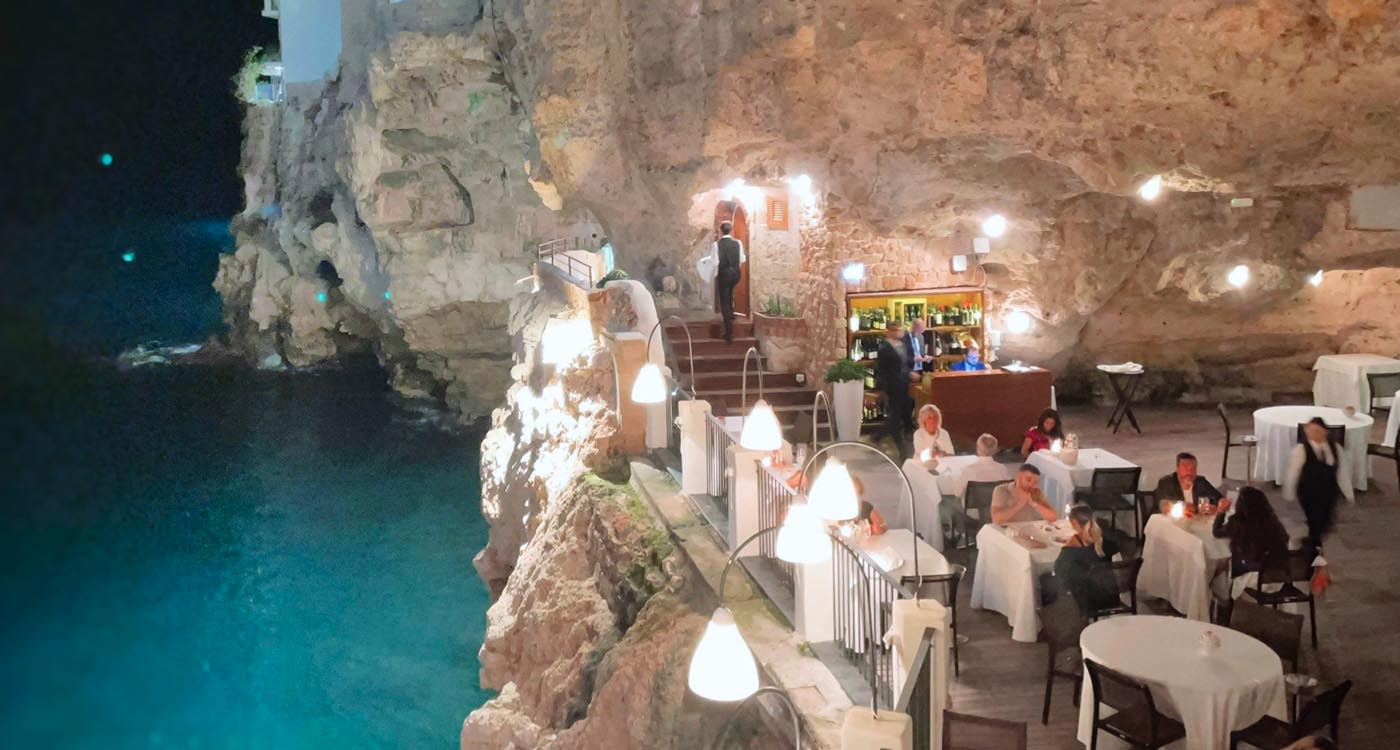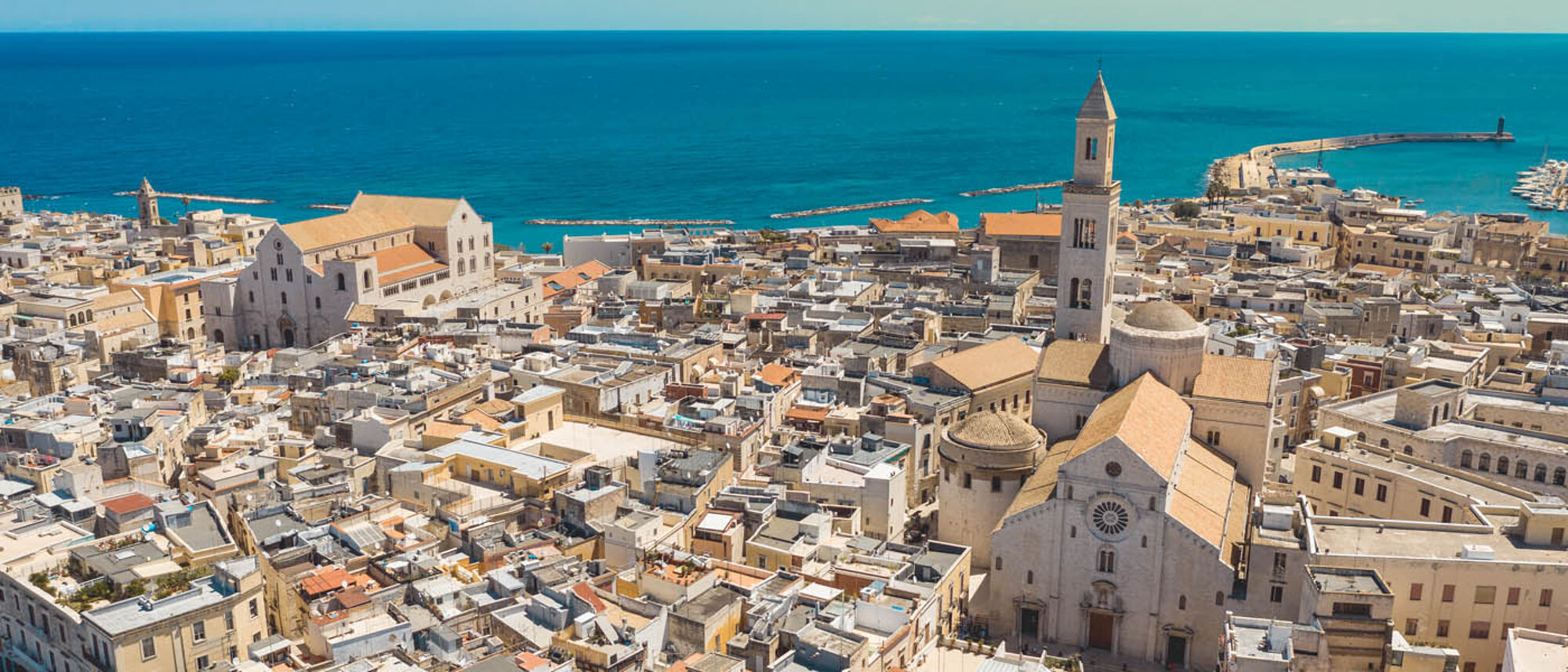
My Secret City: Bari
In a special edition of My Secret City, our Principal and Vice-Chancellor, Professor Sir Anton Muscatelli (MA 1984, PhD 1989), gives us the lowdown on his home city of Bari in the south of Italy. He and his daughter Annarosa Muscatelli (MA 2013) have teamed up to share their most beloved sights, experiences and eateries of the Apulian capital.
ANTON: My favourite building in Bari is the Basilica of San Nicola. It’s a wonderful historic building: built between 1087 and 1197, in essence it’s where East meets West both in terms of European history and religion. It houses the relics of St Nicholas of Myra, the patron saint of Bari, who is actually the historical figure on which the figure of Santa Claus is based. These were stolen from the original shrine in Myra, in Asia Minor, from the Saracens and the Greek custodians of the shrine. San Nicola is a Romanesque cathedral, but one which also has Byzantine and Renaissance features.
ANNAROSA: I love people-watching whilst having a coffee or an Aperol at any bar on Piazza Mercantile. The piazzas are the meeting place in Italian towns and cities, where you will see every generation spill out onto the streets at staggered times to meet their peers, families heading out on their evening 'passeggiata', young love stories unfolding … little windows into the lives of those who live in Bari.
"Bari is a wonderful and heady mixture of many layers of Mediterranean history, good food, sun and the blue Adriatic Sea – a marvellous base from which to explore the many beautiful sights which this part of Italy offers.
ANTON: The old city, ‘Bari vecchia’, houses the Norman-Swabian castle as well as Bari’s two basilicas. But it’s full of local life: although it has been gentrified, many locals still live here as they did in past centuries, in tightly packed streets. You can see local women making the regional speciality, 'orecchiette' ('little ears') pasta, which they sell on the streets, as well as 'taralli' (bread rings made with olive oil and wine).
ANNAROSA: August is the best month; there is still heat in the air, the sea is warm, it’s beautiful. It is particularly fun around the 15th, 'Ferragosto', when the whole of Bari (and Italy) is in party mode. There is music, great food and a vibrant atmosphere as the community comes together to celebrate the Feast of the Assumption. And it’s an excellent opportunity to savour some 'dolcetti' (below) – miniature versions of favourite Italian cakes such as tiramisu and cannoli. Bakeries will only make them on Sundays and on feast days, and in our family we get up very early to make sure we’re at the bakery in time to claim the tastiest ones!
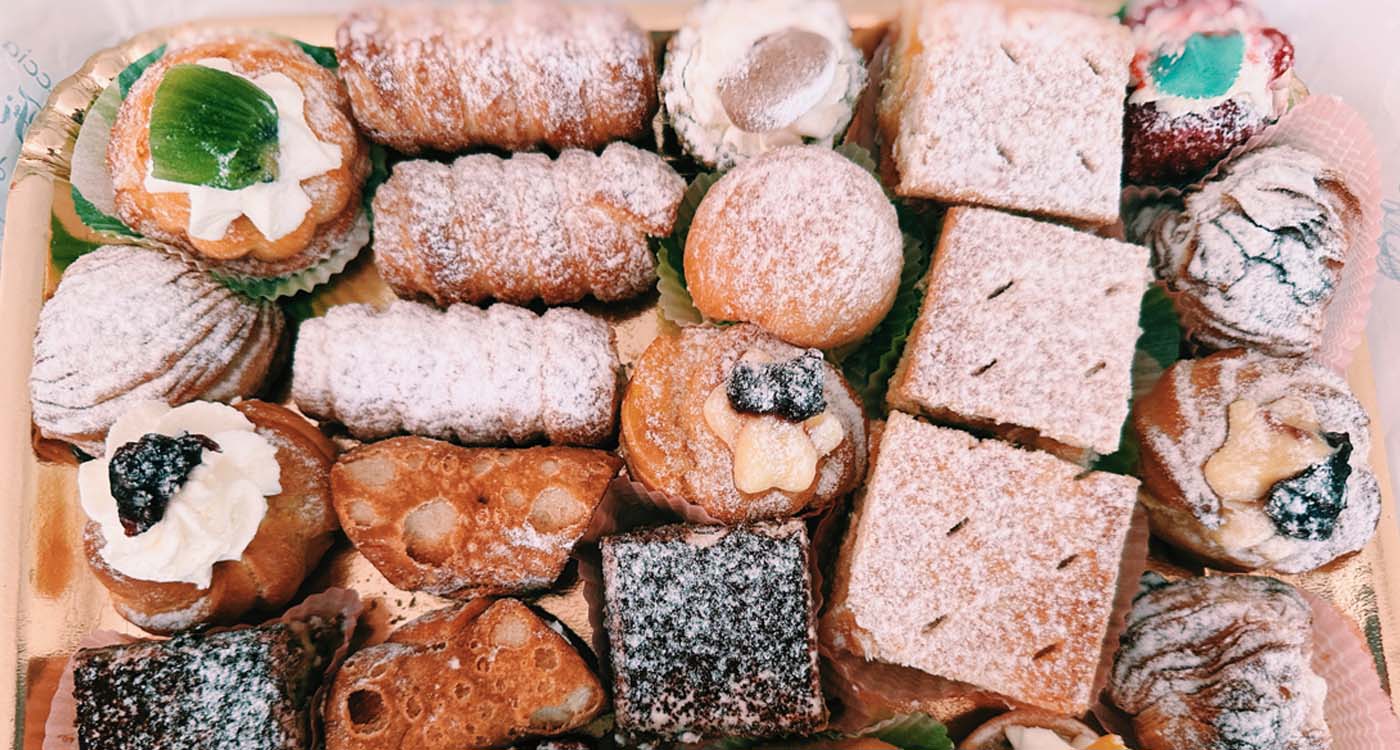
Dolcetti miniature pastries
ANTON: If I have a free afternoon, I will visit the Petruzzelli Theatre and listen to a matinee concert. It is a wonderful opera house, which was built at the end of the 19th century and has recently been restored following a fire in 1991.
ANTON: If I want a day away from the city I will head out to visit some of the lovely towns along the coastline: Polignano a Mare with its stunning setting high on the rocks; Monopoli with its nice tourist port and wonderful restaurants; or Lecce with its beautiful Baroque buildings. Trani, not far north of Bari, has a stunning medieval cathedral. The coastline gets even nicer as you visit the beaches near Lecce on both the Ionian and Adriatic coasts, with many spectacular turquoise shores.
ANNAROSA: A stroll down the side streets of Bari feels like a timeless experience. It could be August 2023, it could be August 1923 … this is part of its charm. My favourite views are of the cool, smooth, yellow limestone cobbles where life seems to spill out of little doors and unfold with tables of orecchiette pasta and fresh vegetables.
ABOUT ANTON AND ANNAROSA
Anton Muscatelli is a professor of economics, and since 2009 has been Principal and Vice-Chancellor of the University of Glasgow. He is also Chair of Trustees of the Royal Economic Society. Anton was born in Bari, and his parents come from the nearby town of Mola di Bari.
Annarosa Muscatelli is an Advancement Consultant at Cairney & Company Ltd. She works with universities, charities and schools to help them fulfil their potential. Annarosa regularly visits the family home in Bari along with her father.
All images this page courtesy of the Muscatelli family (except main image).
ANNAROSA’S AUTHENTIC BARI FOCACCIA
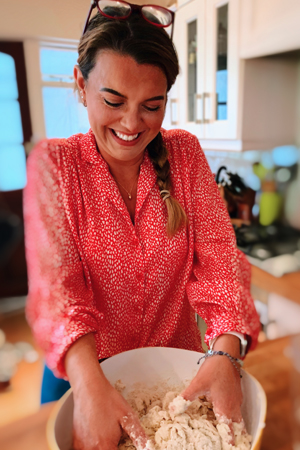 Annarosa runs a food blog called The Wee Italian Foodie, where she shares Apulian recipes, reviews and food-related ramblings.
Annarosa runs a food blog called The Wee Italian Foodie, where she shares Apulian recipes, reviews and food-related ramblings.
"Focaccia Barese is (in my humble opinion) the best focaccia there is," says Annarosa. "It includes potato in the dough and a vast quantity of extra virgin olive oil, two things that make it absolutely irresistible. It is soft and fluffy on the inside with a crunchy, oily base – HEAVEN!"
Ingredients:
For the dough
250g 00 flour
250g semolina flour
2 tbsp sugar
1 large boiled floury potato, peeled and grated (roughly 150g)
7g dry yeast
300ml (roughly) warm water
15g of salt
4 tbsp extra virgin olive oil
For the toppings
Abundant extra virgin olive oil
Datterini tomatoes (or any small tomatoes that are nice and sweet)
Dried oregano
Coarse salt
Black olives (if you like them)
Note: the amount of water you need in this recipe varies a great deal depending on the water content of your potato, so the amounts suggested above are only a guideline. I’ve outlined below what to keep an eye on to make sure it isn’t too wet or too dry.
Method:
- First, boil your potato with the skin on. Once it has cooled down, peel and grate it. Grating the potato keeps the air in and stops it getting stodgy. It also stops you finding lumps of mashed potato in your dough. If you have a ricer in the house, this works best, but if not then using a small grater works well.
- Add your grated potato, 00 flour, semolina flour, sugar and yeast into a large mixing bowl, or the bowl of your stand mixer. Add in 100ml of your warm water and mix for 3 minutes. (Start on slow and work up to medium speed if using a stand mixer).
- Add your salt, olive oil and the remaining water and mix for 5 to 7 minutes. In a stand mixer, you're looking for the dough to gather on the hook and the bowl to be clean (ish), and if you are mixing by hand you are looking for a clean (ish) worktop and a dough that is sticky but smooth and bubbly. Note: this is a really sticky dough, but if you find that it isn’t coming together as it should then add in some more flour. Similarly, if the dough looks dry, then add some water.
- Pop your dough into one thoroughly oiled extra-large baking tray (cast iron is traditional in Bari, but anything will do), or two smaller ones. Allow plenty of room for it to rise.
- Cover it with a muslin cloth or tinfoil and leave to prove somewhere warm for a few hours – 2 to 3 hours will do, or overnight if its particularly chilly.
- Remove the cloth and drizzle with more oil, poking small divets into the focaccia dough as you go, to create that dimpled texture that is so recognisable.
- Add your tomatoes on top with olives (if you like them) and then sprinkle oregano and coarse rock salt.
- Let it rest for another 30 mins or so then bake at 200’C for 10 minutes on the bottom shelf of the oven, then 10 minutes on the top. Then turn the oven off and leave in for 5 minutes.
- Let it sit for at least 15 minutes once it is ready (yes, this is the hardest bit of the recipe!). If you don’t, the dough becomes quite stodgy and squished.
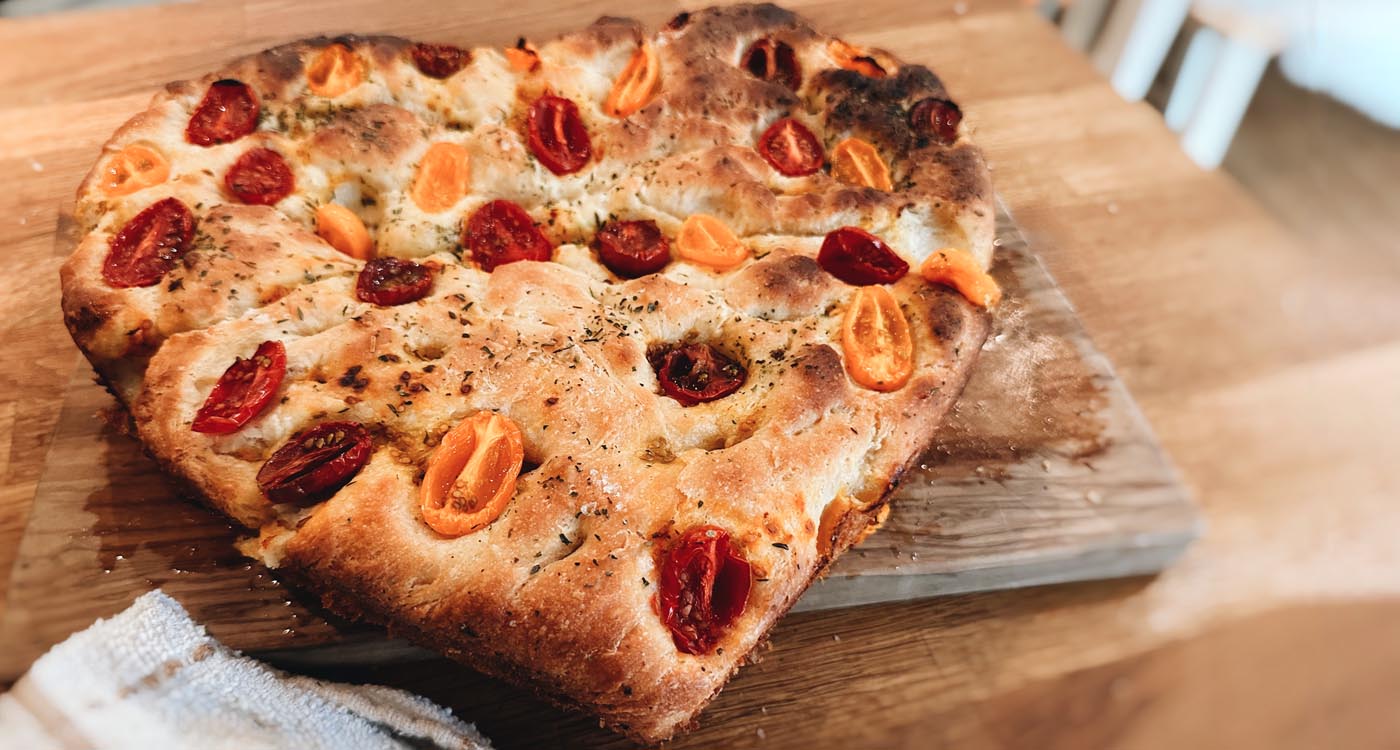
- Slice it up and enjoy – this one above was clearly made with love!
This article was first published September 2023. All opinions expressed are the views of the author and are not endorsed by the University of Glasgow.
OUR FOOD AND DRINK HIT LIST
ANTON: Apulian food tends to be based largely around seafood, fish, and local vegetables. Tuccio – Cucina e Caffè in Piazza Massari near the Norman castle has a range of local specialities such as orecchiette pasta. A short train ride away in Polignano a Mare is a lovely restaurant on the rocks called Il Covo dei Saraceni on a terrace overlooking the dramatic coastline which is a family favourite. And further inland in Matera, a good place to eat is Ristorante Stano, which serves traditional food from Apulia and Basilicata with a modern twist, such as cicorie e fave (fava bean puree with chicory, below).
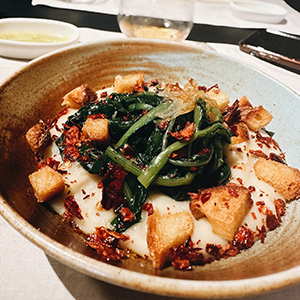
ANNAROSA: As the sun sets over the sea, La Ciclatera Sotto il Mare is a wonderful place for an Aperol. This place has some of the best views in the city, as well as making brilliant cocktails and traditional Barese snacks. There is also often live music, so it turns into a bar-nightclub vibe in the evenings.
ANTON: The dessert you must try is pasticciotti, traditional pastries filled with fresh custard alone or in other combinations like amarena cherry, pistachio, chocolate and more. A great accompaniment for coffee. Indeed, if you like cold coffee, caffè Leccese (below) is cold espresso served on ice with almond syrup – a real local delicacy.
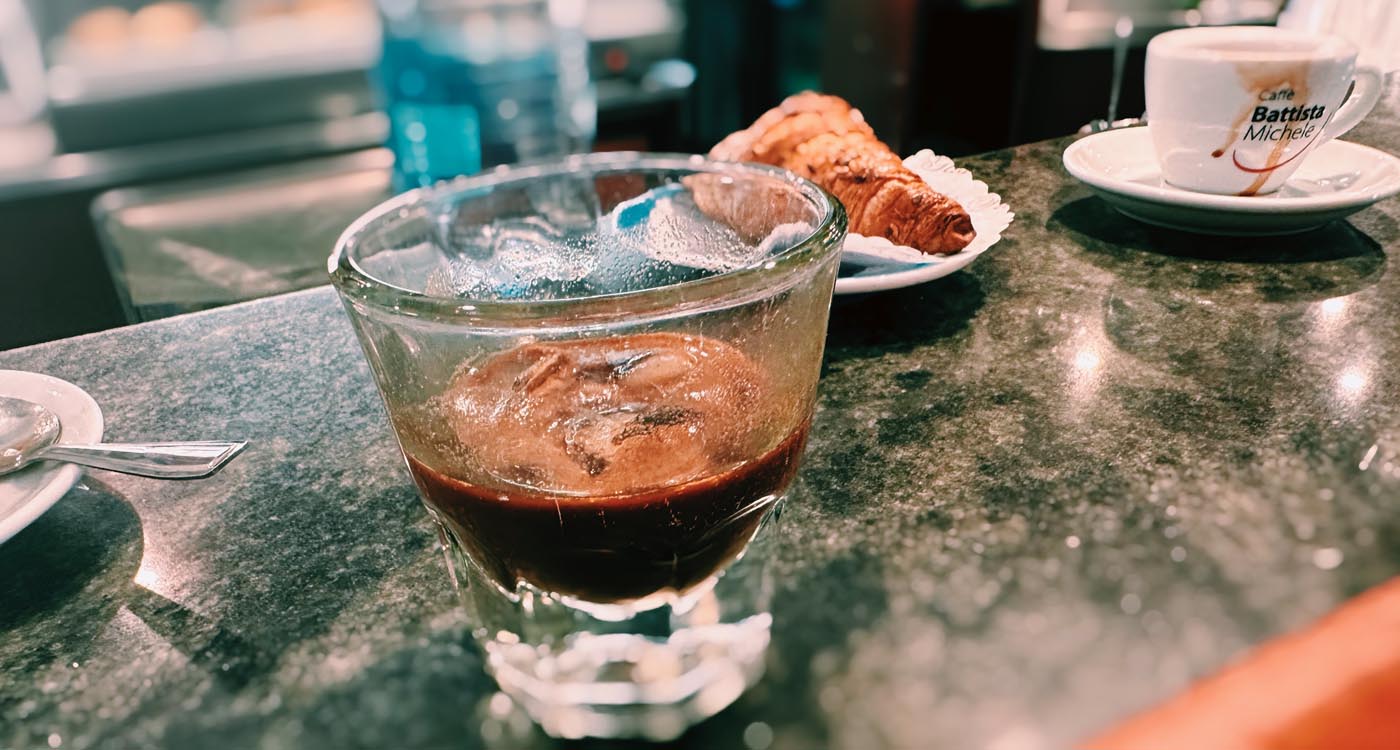
Martinucci in Piazza Mercantile in the old town of Bari is a great place to visit. It is part of a chain of pastry and ice-cream shops that started in Lecce in southern Puglia. Martinucci also makes great ice cream so you will have plenty to choose from!
ANNAROSA: Believe it or not … the deep-fried pizza did not originate in Glasgow! Panzerotti date back to the 16th century in Bari, when wives would use leftover bread dough to make little calzones and fry them. These days, panzerotti are the epitome of the region’s street food and really showcase the local flavours, in the way only something deep-fried and smothered in cheese can.


